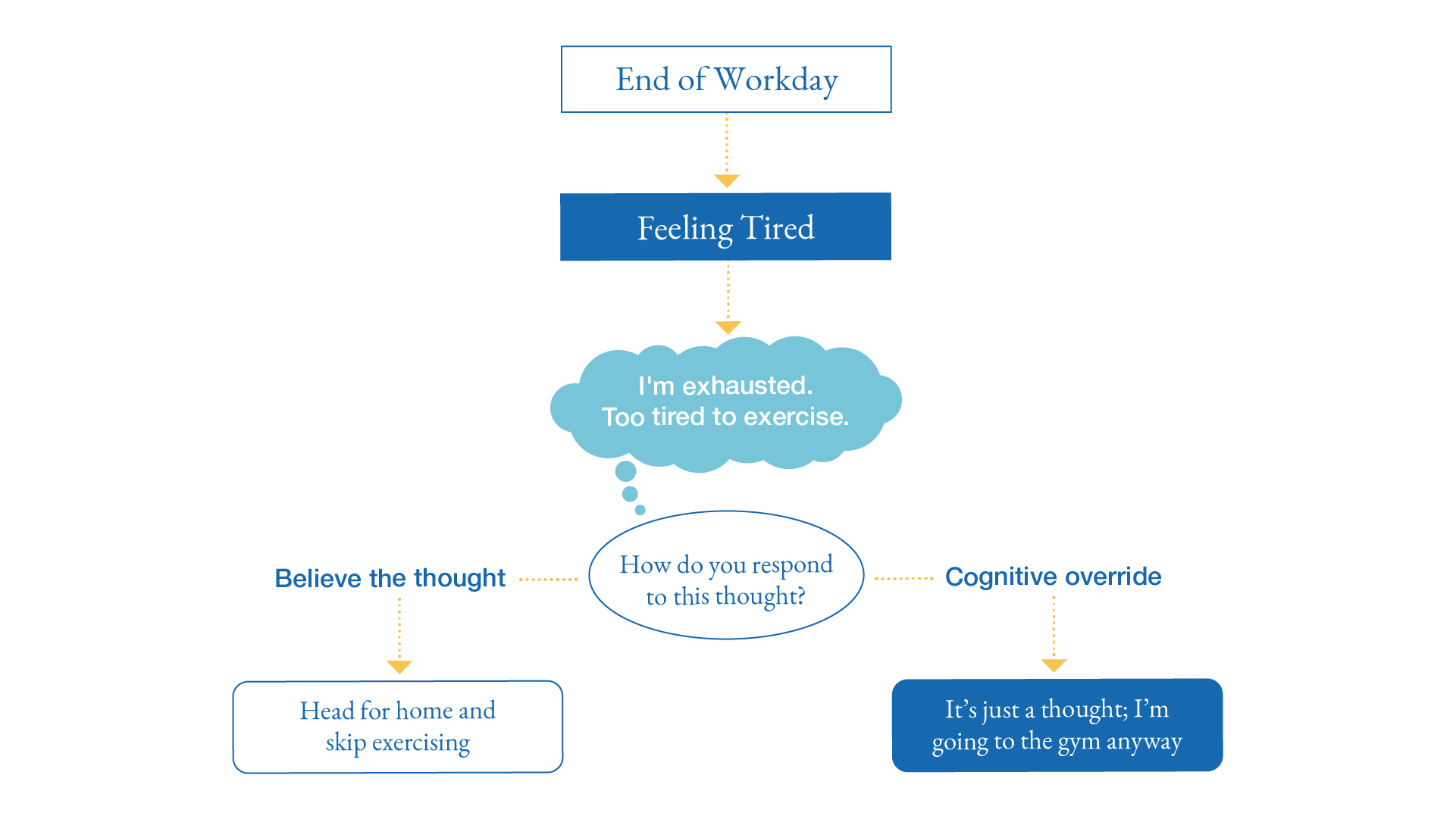How to Exercise Even If You Feel “Too Tired”
Most people already know that exercise is good for them. The real barrier isn’t a lack of awareness—it’s everything else: long workdays, family responsibilities, mental fatigue, or just feeling worn down. In most cases, the reason we don’t exercise isn’t informational—it’s situational, motivational, or psychological.
One of the hardest times to prioritize movement is during mid-career. You may be leading teams, managing deadlines, juggling home life—all while putting in 10- to 12-hour days. By the time evening rolls around, your brain shifts into excuse mode. “I’m too tired to exercise.” And the internal dialogue begins.
The Mental Tug-of-War
If you’re like many people, your internal conversation might sound something like this:
Motivated You: “Let’s go. It’s time to take my health seriously.”
Resistant You: “Seriously? I’ve been working nonstop. I’m exhausted.”
Motivated You: “But the new gym is right on the way home. Just 20 minutes on the treadmill.”
Resistant You: “No way. The couch and takeout are all I’ve got in me.”
You sigh, compromise, and say: “I’ll start tomorrow.”
But here’s the truth: that “tomorrow” rarely arrives. What’s missing from this conversation is a powerful, game-changing realization:
“You’re not actually too tired to exercise—you just think you are.”
How I Broke the Cycle
This isn’t just something I’ve heard from others—it was once my daily struggle too.
Years ago, I was working a demanding schedule: 12-hour days, an hour-long commute, and dinner rarely before 7:30 p.m. I constantly told myself, “There’s no time. I’m too tired.”
Eventually, I tried something different—thanks to a concept I had come across: implementation intentions.
An implementation intention is a simple but powerful strategy. It’s an internal agreement to act based on an external cue—regardless of how you feel in the moment. The cue can be a specific time, location, or event.
In my case, I made the decision that whenever I left work—whether it was 5 p.m. or 8 p.m.—I would go straight to the gym. I committed to trying this for a month.
At first, it took effort. I felt drained walking into the gym. But within minutes, that inner resistance would fade. And by the time I left, I didn’t feel more tired—I felt energized.
Thirty days turned into several years. That’s not to say the resistance vanished completely. But instead of listening to it, I followed my commitment—until it became automatic.
The Energy Paradox
What I experienced wasn’t unique. Science backs it up.
A comprehensive meta-analysis of 70 clinical trials involving more than 6,800 people—including individuals with heart disease, diabetes, and cancer—found a consistent result:
Exercise reduces fatigue and increases energy.
Over 90% of those studies confirmed it.
Unlike caffeine or sugar, which offer a short-lived boost followed by a crash, exercise taps into your body’s natural energy reserves. It stimulates brain chemicals like dopamine, norepinephrine, and serotonin—enhancing mood, focus, and vitality.
Why We Still Don’t Do It
If exercise reliably makes us feel better, even when we start tired—why don’t we just do it?
Because fatigue is persuasive.
When your mind says, “I’m exhausted,” it doesn’t just inform you—it convinces you. But in many cases, that fatigue isn’t physical—it’s mental inertia.
We fall for a common illusion: “If I feel tired, I must need rest.”
But often, what we really need is movement.
Cognitive Override vs. Discipline: What’s the Difference?
Cognitive override is a powerful mental tool, and it works best when paired with implementation intentions.
But it’s not the same as discipline.
- Discipline is a long-term trait. It’s about sticking to your goals over time, resisting distractions, and building consistency through repetition and effort.
- Cognitive override, on the other hand, is about the present moment. It’s the decision to not trust your automatic thoughts when they conflict with your deeper intentions.
Where discipline says: “Push through. Stay focused.”
Cognitive override says: “I hear the thought—but I’m not following it.”
The Magic of Implementation Intentions
Implementation intentions make cognitive override easier. They give your brain a clear “if-then” script to follow.
“If it’s 6 p.m., I go to the gym.”
“If I finish dinner, I take a 10-minute walk.”
They free you from debating with your inner monologue—because the decision has already been made. Over time, as you keep showing up, that action becomes habit.
The real magic? You’re not just building fitness. You’re rewiring the relationship between thought and action. You’re teaching yourself that you don’t need to feel ready—you just need to begin.
Rewiring the Narrative
Let’s revisit that inner dialogue with one small but crucial change for that middle-aged individual who is struggling to find time to exercise:
Resistant You: “I’m beat. I don’t have the energy.”
Motivated You: “You just think you’re tired. Start moving—you’ll feel better in five minutes.”
That’s not denial. That’s clarity!
A Final Word and Call to Action
If you’re waiting to feel motivated and “not tired” before you exercise, you may be waiting forever. The truth is action often precedes motivation—not the other way around.
So try this:
- Choose a cue.
- Create an “if-then” plan.
- Choose to ignore the noise in your head.
- Start moving—no matter how small the step.
You don’t have to argue with your mind. You just have to stop waiting for permission.
And when you do, you’ll usually discover that the energy you thought you lacked was already inside you—waiting to be unlocked.




